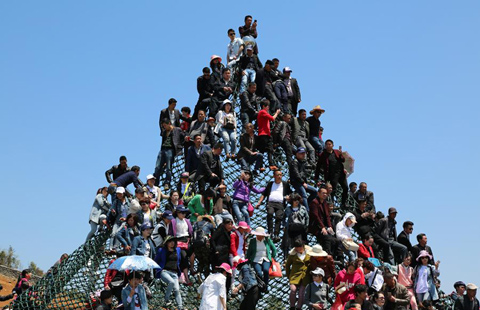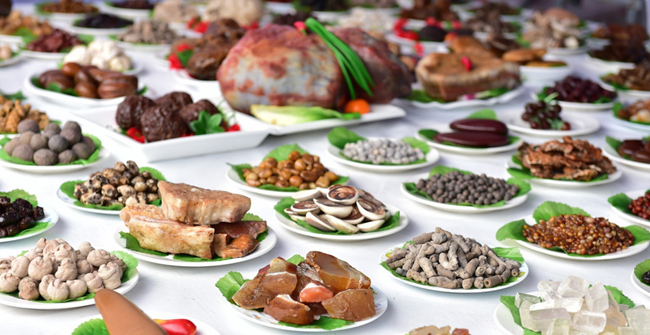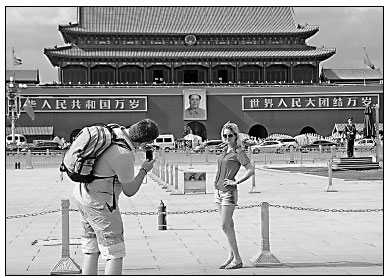Back in business
Updated: 2015-06-29 14:54
By Yang Feiyue(China Daily USA)
|
||||||||
China's inbound travel industry is bouncing back, with some marketing and tax rebates, Yang Feiyue reports.
China's inbound tourism has rebounded, thanks to the many efforts being made to market the industry and create new tax rebates, experts say.
The number of inbound tourists to the Chinese mainland reached 54.58 million from January to May, up 4.8 percent over the same period in 2014, according to Beijing-based China Tourism Academy, an industry body.
Inbound visits over the first quarter witnessed a 4 percent growth, the first rebound since 2012, according to a report by Beautiful China (travelchina.gov.cn), an overseas travel promotion website for China's National Tourism Administration.
Asians made up 64 percent of all inbound tourists to the mainland for the first five months of the year. The income from inbound tourism stood at $12.8 billion in the first quarter, a slight increase as compared with the same period last year, the report says. So far this year, Beijing noticed foreign visitors warming up to it after a continuous decline in interest since 2012.
South Korea, Japan and the United States remain the three biggest sources of foreign tourists to the mainland.
"We've seen the number of tourists from South Korea rise by 22 percent year-on-year from January to April, and the number from Japan increase by 2 percent," says Zhang Jing, head of the publicity department at the Beijing Commission of Tourism Development.
There were 1.28 million inbound tourists in the Chinese capital during the first four months of the year, roughly the same as the number recorded in the same period last year.
"The downward trend has stopped," Zhang says.
However, the share of Western tourists among all inbound tourists to the mainland is falling, according to the report.
A total of 5.61 million foreign tourists made trips to the mainland in the first three months, down 3.9 percent year-on-year, according to the tourism administration. Income from tourists from the West also dropped by 0.4 percent.
The appreciation of the yuan, pollution in China, slow economic recovery in Europe and the US, and the expansion of tourism markets in Japan, Thailand and South Korea are all to blame for the decline, experts say.
New initiatives
To reverse the downward trend, China has held bilateral tourism promotion campaigns with several countries over the years, which experts believe has helped draw tourists to the mainland.
The country has staged tourism promotion campaigns in South Korea since the beginning of this year, which appears to have paid off.
The number of tourists from South Korea hit 992,900 in the first three months, a historical high, the Beautiful China report says.
More inbound travelers are expected to flock to China, with new initiatives on tourism exchanges, announced at the Tourism Ministerial Meeting of Countries along the Silk Road Economic Belt in Xi'an, Shaanxi province, on June 19.
Tourism ministers from Silk Road Economic Belt and Maritime Silk Road countries, including Bulgaria, Hungary, Indonesia, Russia and Mongolia, have promised to build an integrated tourism market that would include linking sites in separate countries in tours and pushing for more convenient visa policies.
The initiatives are expected to bring in 85 million inbound tourists from countries along the Silk Road to China in the future and generate $110 billion in the consumption of tourism resources, says Li Jinzao, director of National Tourism Administration.
In addition, a new tax-refund policy announced earlier this month is expected to encourage inbound tourist spending, other experts say. Inbound visitors can now claim tax refunds on purchases made across the mainland, thanks to the nationwide policy.
Tourists from foreign countries and those from Hong Kong, Macao and Taiwan who have lived on the mainland for no more than 183 days will be eligible for a rebate of up to 11 percent on consumer goods bought at designated department stores.
The minimum purchase to qualify for a tax refund is 500 yuan ($80.60) at any one store in a day.
The move underscores the country's eagerness to bolster onshore consumption, experts say.
Zhang Jinshan, head of the tourism economy division of the Tourism College at Beijing Union University, says the relaxed visa policy and increased marketing efforts might produce positive results soon.
Popular spots
Traditional tourist destinations, including Beijing, Shaanxi province's Xi'an, Shanghai and Guangxi Zhuang autonomous region's Guilin city, remain popular among foreign guests, says Liu Hongshi, deputy general manager for Beijing-based China Travel Service's inbound tourism department.
His company is among China's biggest travel brands.
"Chengdu in Sichuan province enjoys popularity among tourists from Europe and the US because of the panda," Liu says.
Internationally well-known holiday resorts, such as those in Hainan province's Sanya and Zhejiang province's Wuzhen town, have all received positive reviews from foreign guests, Liu adds.
Anastasia Sukhoretskaya from Russia says: "People around me complained of too many visitors at scenic spots in China. But overall, food and sightseeing are pretty nice."
There is an increased interest among Russians to travel in China, she adds.
Contact the writer at yangfeiyue@chinadaily.com.cn
|
The 2,700yearold town of Pingyao in Shanxi province is a popular destination among foreign tourists. Wang Zhuangfei / China Daily |
|
The number of inbound tourists to the Chinese mainland has increased during the first five months of this year, the first rebound since 2012. Gong Wenbao / Asia News Photo |
(China Daily USA 06/29/2015 page9)
- Beijing and Brussels unlikely to reach consensus on investment synergy
- Hollande, Essebsi vow 'solidarity against terrorism' after attacks
- French beheading suspect was 'normal neighbour'
- US condemns terrorist attacks in France, Kuwait, Tunisia
- Harper apologizes for Chinese Head Tax again
- EU leaders agree to confront migrant crisis

 7 ways to make graduation travel more memorable
7 ways to make graduation travel more memorable
 Rides that turned deadly at amusement parks
Rides that turned deadly at amusement parks
 Rainstorms hit East China, flooding streets
Rainstorms hit East China, flooding streets
 Ten photos you don't wanna miss - weekend special
Ten photos you don't wanna miss - weekend special
 The world in photos: June 22-28
The world in photos: June 22-28
 Chinese curve busters
Chinese curve busters
 A banquet made of stones
A banquet made of stones
 Gay rights supporters celebrate historic ruling
Gay rights supporters celebrate historic ruling
Most Viewed
Editor's Picks

|

|

|

|

|

|
Today's Top News
European visit to find economic synergies
Disney bans selfie sticks at theme parks over safety concerns
China gets 30% stake in AIIB as bank takes shape
New York prison break ends with shooting of 2nd fugitive
Nation can meet growth challenges, premier says
China mulling 'green finance' to tackle environmental blues
Top leadership studies anticorruption ahead of CPC anniversary
Key events in the history of US gay rights
US Weekly

|

|

